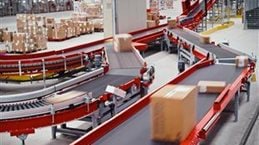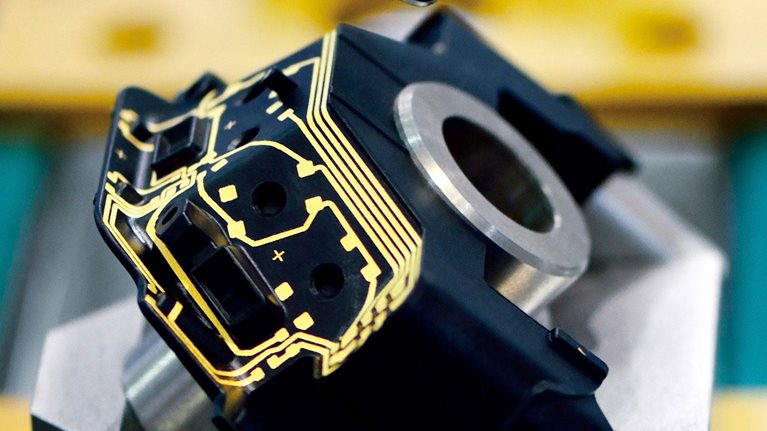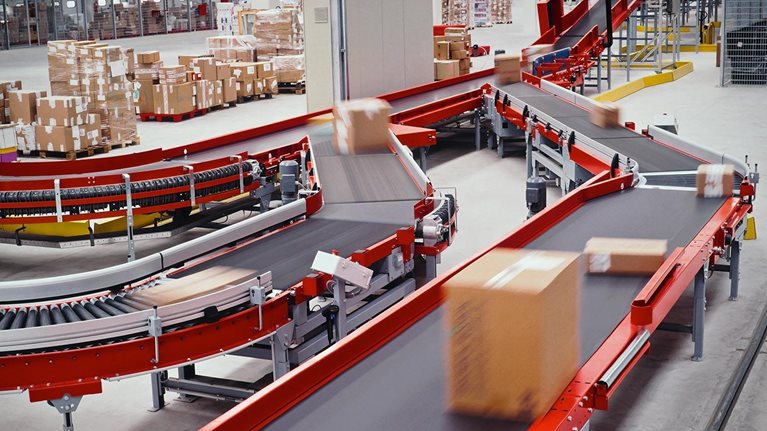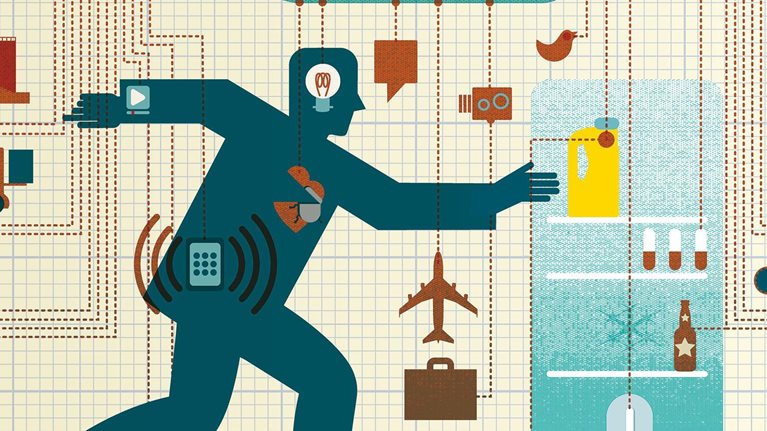Some of the most innovative Internet of Things (IoT) applications involve video analytics—a technology that applies machine-learning algorithms to video feeds, allowing cameras to recognize people, objects, and situations automatically. These applications are relatively new, but several factors are encouraging their growth, including the increased sophistication of analytical algorithms and lower costs for hardware, software, and storage.
With video analytics becoming more important to IoT applications, we decided to examine this technology more closely. We first looked at the general factors propelling growth and then examined opportunities by use case, setting, and technology. To gain more insight into go-to-market models, we investigated two out of the many areas where the use of video analytics is relatively well established: surveillance (for multiple consumer and business use cases) and retail.1 Our work builds on a June 2015 report, “Unlocking the potential of the Internet of Things,” by the McKinsey Global Institute (MGI). It also draws on expert interviews for insights on video-analytics technologies and customer segments.
We found that the opportunities for video-analytics applications will vary by setting and function. Similarly, opportunities to make money vary along the IoT value chain, with companies positioned to capture most revenue from software and application development.
What settings offer the best opportunities for video analytics?
MGI predicts that IoT applications will have a potential economic impact of $3.9 trillion to $11.1 trillion a year by 2025. Video-analytics applications, which are expected to have a compound annual growth rate of greater than 50 percent over the next five years, could significantly contribute to the expansion of IoT applications.
Would you like to learn more about how we help clients understand the Internet of Things?
To identify the areas where video analytics will be in the greatest demand, we followed an approach similar to the one MGI employed when estimating the growth of IoT technology. Specifically, we looked at potential applications that could be developed for nine settings—all well-defined physical locations—rather than looking at opportunities by industry. The settings are shown in Exhibit 1.

Based on our analysis, demand for video-analytics applications will be greatest in the city, retail, vehicle, and work-site settings by 2020. The most common use cases will involve optimizing operations, enhancing public safety, increasing employee productivity, and improving maintenance. Overall, the largest total available market for video analytics will involve optimizing operations in cities and factories—currently its most popular application—and enabling various functions in autonomous vehicles, such as blind-spot monitoring.
In all settings, video-analytics providers will have to address privacy issues, since many users are uneasy about being monitored, especially in situations where the data might be used against them. For instance, production-line workers may object to video monitoring if they believe that the footage will be used to criticize their work habits.
What are the advantages of today’s video-analytics applications?
IoT applications usually offer more value when they incorporate video analytics, since the technology allows them to consider a wider range of inputs and make more sophisticated decisions (Exhibit 2). For instance, some typical IoT applications use beacons that transmit location data each time they connect with a consumer smartphone in a store. While this data can help retailers track the number of visitors, a video-analytics application would provide more detailed demographic information, such as the genders and ages of the shoppers.

Recent advances that have increased demand for video-analytics applications
Over the past few years, several important developments have increased the sophistication and utility of video-analytics applications, turning them into a much more important growth driver for the IoT. First, computer-processing power has improved while simultaneously becoming less expensive. For instance, entry-level pricing for cloud-computing services is 66 percent lower than it was two years ago. There have also been important advances in IoT connectivity and the number of large data sets available for analysis. Finally, video analytics have benefitted from the development of more complex software algorithms and machine-learning technology—a type of artificial intelligence that gives computers the ability to learn without being explicitly programmed.
Some of the most important recent advances in video-analytics technology involve the following:
-
Real-time processing. Today’s applications can process a high volume of video footage in real time. This feature allows users to see evidence of potential problems as soon as it is available and take immediate corrective action, such as deploying store personnel to monitor shoplifters.
-
Greater accuracy. Video-analytics applications are capable of much more precise image analysis. Consider the revolution in surveillance applications. The first ones were only capable of basic motion detection, using pixel matching and frame referencing to detect changes in the position of objects within their view. As a result, any movement might be flagged as a possible problem. By contrast, current video-analytics applications can recognize and disregard motions that previously triggered false alarms, such as a leaf falling in front of a security camera. In addition, users can program surveillance systems to detect specific visual patterns, such as movements associated with retail theft or the appearance of flames.
-
Better business insights. With their advanced image-processing capabilities, video-analytics applications can consider multiple visual inputs, some of which may be ambiguous and require careful processing. For instance, they can assess the demographics and behaviors of retail customers and turn this information into business insights that assist with product assortment and placement, potentially improving store efficiency, customer conversion, customer loyalty, and other metrics.
-
Access to large data sets and more nuanced analyses. The software algorithms in video-analytics applications are now capable of gathering and analyzing video footage from multiple sources, thereby generating more detailed insights. For example, surveillance applications can identify people based on physical characteristics from video feeds collected at multiple locations at different times. Similarly, retail applications can aggregate data from multiple video feeds to determine the shopping patterns characteristic of different demographic groups.
-
More innovative use cases. With better video-analytics applications, new use cases are emerging. For instance, some cities are examining aggregated data from city and highway video cameras for the first time, looking at volume, timing, and distribution of traffic. This information may help improve traffic management and could even be used when designing future roadways.
Such improvements have helped business executives recognize the value of video analytics across sectors, from city planning to healthcare. Retailers, for instance, are using IoT applications with video analytics to assess the age range, demographic profile, and behaviors of their customers. The software within these applications then makes multiple recommendations about product assortment and placement.
How do companies use video-analytics applications?
To explore the potential opportunity for video-analytics IoT applications in more detail, we examined two of the top use cases. First, we examined surveillance applications, including those for motion tracking, object counting, and detection of object removal and abandoned objects, across all settings. We then looked at retail analytics, such as heat mapping, people counting, shopper-demographics analysis, loitering detection, and dwell-time analysis.
Surveillance
Across settings, IoT applications can reduce crime and protect the public. By 2025, for instance, cities are expected to capture $14 billion to $31 billion in economic value through improved crime detection and monitoring. Although video-analytics technology is already central to many surveillance applications, it may play an even greater role in the future.
Most mature surveillance companies still specialize in simple video analytics, such as motion detection, where cost is the main differentiator. The more advanced surveillance applications, which have advanced detection capabilities and high accuracy, are marketed by start-ups.
Despite recent advances, video-analytics applications for surveillance still have many technological limitations. In particular, they would benefit from greater video-compression capabilities to ease transmission and storage demands, as well as better integration with other IoT systems. For instance, it would be helpful if a video-analytics application could detect fire on a video feed and then notify another IoT device that activates the sprinkler system or calls for firefighters.
As with most video-analytics applications, software development appears to offer the best opportunities for capturing value for surveillance use cases. This layer may be lucrative because customers typically need customized applications, rather than off-the shelf solutions. In addition, surveillance software is often protected by intellectual-property rights or strict licensing agreements, so companies with strong offerings may have little competition.
The current market and winning business models.
The surveillance market is composed of many small customers and a few large retailers. Companies that develop video-analytics applications for surveillance can follow several different business models, but most now do one of the following:
-
Integrators. Under this model, companies offer solutions across the entire IoT value chain, from solution integration to hardware, giving customers a single source for all their surveillance-technology needs. This model may give integrators a competitive edge, since most surveillance customers are not security experts and prefer end-to-end solutions that cover installation, hosting, analytics, and other tasks. In addition, many surveillance customers, such as casinos and government agencies, must meet strict regulatory requirements and want assistance in fulfilling them. Integrators often assist with these tasks by subcontracting with other providers, such as companies that install cameras.
-
Focused single-step providers. These companies concentrate on a single link in the IoT value chain, such as video-management platforms or wire installation. They frequently form partnerships with integrators to provide marketing and customer-support capabilities, reducing the need for large internal sales teams.
-
Consulting services. In addition to providing software and hardware solutions, consultants also make business recommendations that relate to many major organizational groups or functions.
Retail analytics
IoT applications could help retailers capture between $410.0 billion and $1.2 trillion in annual economic value by 2025 by improving performance in multiple areas, including in-store promotions, staff allocation, and shop-floor layout. Many of the most valuable applications could include video analytics, since most large retailers already have surveillance cameras and can use data obtained from these feeds.
While companies in many segments prefer end-to-end solutions, this is especially true in retail, where most customers are not as tech savvy and typically do not have strong opinions about specific software or hardware providers. Companies that provide retailers with video analytics fall into two categories: large businesses that tend to compete in more commoditized areas, such as traffic counting, and niche players that focus on retail applications, such as those that assist with queue management.
The current market and winning business models.
Retail customers include enterprise businesses—large companies with a national or global presence—and small to midsize businesses (SMBs) with, at most, 50 stores. SMBs tend to request simple applications, such as those for traffic counting and loss prevention. In addition to such applications, enterprise retailers also seek applications that can perform more complex analyses of customer demographics, staffing, and other factors. In many cases, enterprise customers take advantage of their scale by aggregating and analyzing video data from many different stores, which leads to greater insights.

Unlocking the potential of the Internet of Things
Many enterprise customers can independently deploy and manage video-analytics applications, but SMBs often want greater customer support. Another difference is that enterprise players tend to pick the best application for each use case, so they may work with a number of different providers, while SMBs typically prefer to have a single point of contact—either an individual, or a company as solution provider or reseller—for all their video-analytics needs.
Companies that want to serve the retail video-analytics segment can play one or more roles. Some, for instance, create end-to-end solutions that can be readily implemented and fulfill all of a retailer’s needs for software, analytics, service, and infrastructure. Most of the SMB retailers rely heavily on such providers, since they lack the expertise needed to implement their own video-analytics solutions. Alternatively, they could act as resellers that provide software created by other companies. Resellers have strong existing relationships with retailers of all sizes and can assist with implementation, deployment, service, and infrastructure.
The remaining two business models focus on software or hardware. Software-app developers provide specific retail applications, such as those for people counting or heat-map analysis. They sometimes provide end-to-end solutions on a limited scale. Hardware providers sell video-camera hardware without the software, but often have difficulty making a profit in retail, since their products are commoditized and margins are low. In addition, most retailers lack the knowledge and resources needed to create complete video-analytics solutions. Hardware providers that offer small or unobtrusive cameras may have an advantage over the competition, since many retailers, especially high-end luxury stores, do not want to make their customers feel like they are constantly under surveillance.
What are the best opportunities within the IOT technology value chain?
Companies may be tempted to develop multiple technologies for use in video-analytics applications, but our research shows that the revenue at stake varies significantly by segment. What’s more, these revenues are often higher or lower than those seen with traditional IoT applications (Exhibit 3). For instance, IoT video-analytics applications tend to generate more revenue than typical IoT applications within software and application development but lower revenues within solutions integration and hardware.

Although the current market for IoT video-analytics applications is relatively small, there is a large opportunity in the coming five to ten years. As IoT video-analytics applications become more popular, they will provide more value across an even wider range of use cases and settings. Together, these factors could make video analytics one of the most important growth drivers for the IoT, opening a new world of possibility to developers, businesses, and consumers.


